Perched at the top of Mount Tibidabo, the Church of the Sacred Heart rewards visitors with exceptional views of Barcelona and the surrounding countryside.
Built between 1902 and 1961, and topped by a giant statue of Jesus, the church is an iconic feature of Barcelona’s skyline and can be seen from most parts of the city.
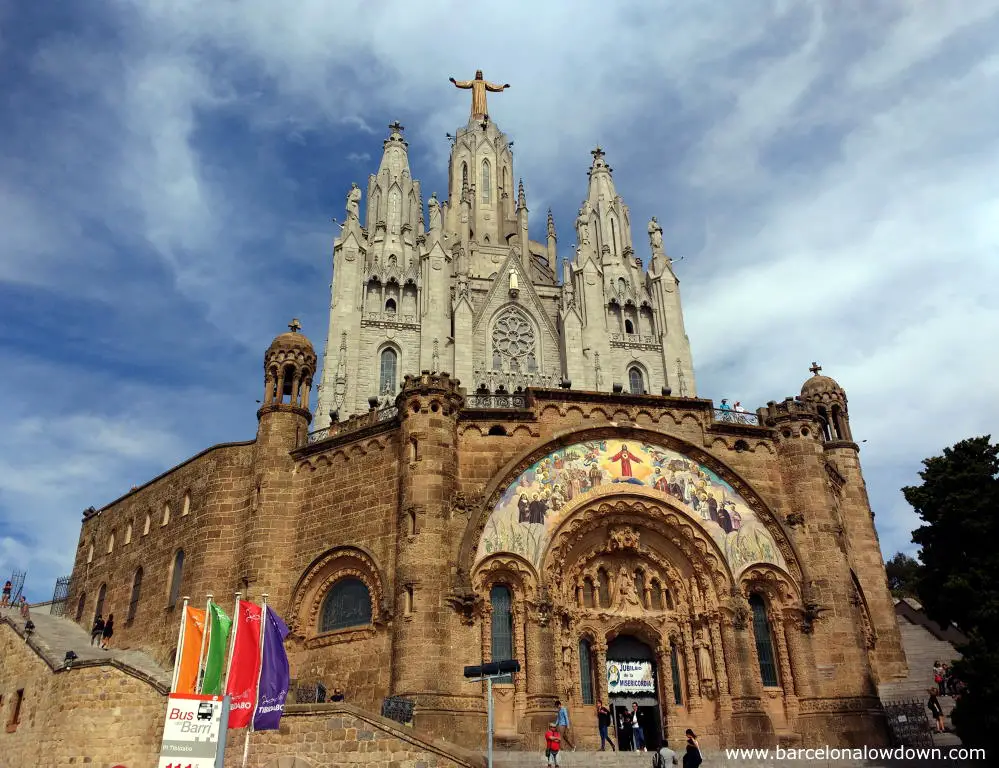
History of the Church of the Sacred Heart
The Church of the Sacred Heart (Catalan: Temple Expiatori del Sagrat Cor de Jesús) was designed by Eric Sagnier and completed by his son Josep Maria Sagnier.
The church was built in two phases which are easily distinguished by their different architectural and decorative styles and the use of different types of stone. The Byzantine crypt was built between 1902 and 1911 using stone from Montjuïc. The neo-gothic main church was built between 1915 and 1961 using a lighter coloured stone from Girona.
In fact, the origins of the church date back to 1886 when a small hermitage was built on the site by John Bosco, an Italian priest who was canonised in 1934.
Visiting the Church of the Sacred Heart
The main entrance to the crypt is through a baroque style doorway beneath a mosaic arch that depicts Jesus surrounded by angels and Spanish saints. Stone stairs leading up from Plaça Tibidabo continue either side of the building to the terrace in front of the main church.
The interior of the crypt is elaborately decorated with mosaics that recount the construction of the church as well as carvings depicting scenes from Jesus’s life. Stairs from the left side of the crypt lead you to the lift up to the towers, also accessible from outside of the building.
The neo-gothic church has a square floorplan with five towers. The four lower towers are decorated with large stone statues of the twelve apostles. The main, central tower of the church is crowned by a seven-metre bronze statue of Jesus by Josep Miret which replaced an earlier version of the sculpture by Frederic Marès that was destroyed during the Spanish Civil War.
The interior of the church is simply decorated with stained glass windows and an altar with a large crucifix. To the right of the church is the original hermitage that was built in 1886.
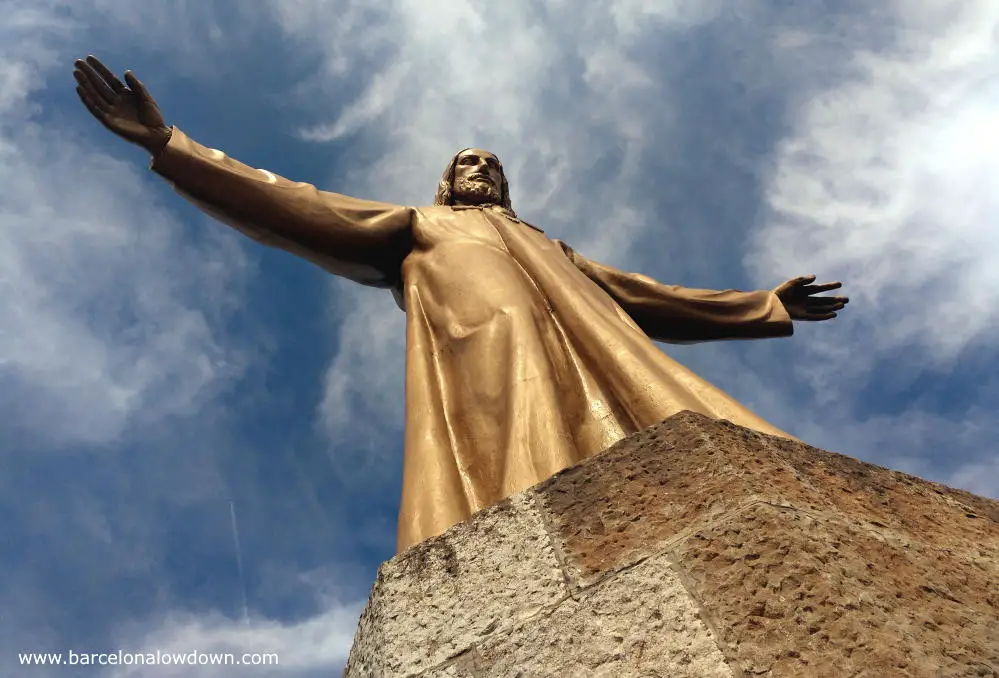
Church of the Sacred Heart Viewpoints
Located right at the peak of Mount Tibidabo, 512 metres above sea level, the church rewards offers exceptional panoramic views.
The best views are from the church’s tower which is accessible using the lift located at the left-hand side of the crypt. The lift takes you up to a large viewing platform with coin-operated telescopes. From here, there’s a spiral staircase up to the top of the tower where a circular balcony just below the statue of Jesus offers fantastic 360-degree views.
Apparently, on a clear day, you can see as far as the Balearic Islands although whenever I’ve visited it’s been a bit hazy. Having said that the views were always fantastic and well worth the climb.
Opening Times and Prices
Crypt and Basilica
The crypt and basilica can be visited free of charge, opening times vary.
- March to May plus October: The church is open from 11:00 to 19:00
- June to September: The church is open from 11:00 to 20:00
- November to February: The church is open from 11:00 to 18:00
Tower and Viewpoint
Tickets to visit the tower currently cost €5.00.
Tickets are purchased from a vending machine that accepts coins and small value notes (€5 and €10 notes only). Credit and debit cards are currently not accepted.
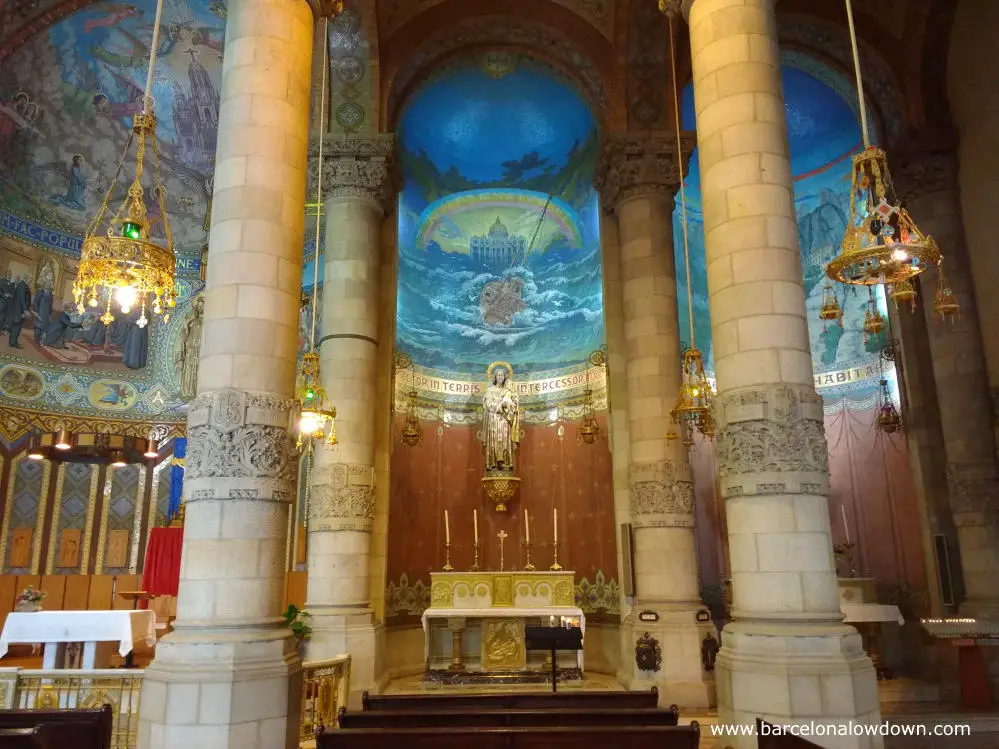
How to get there
The easiest way to get to the church is by car or motorbike. There’s a car park at the amusement park which charges approximately €3 per hour.
Having said that, I don’t recommend that you rent a car when visiting Barcelona. Parking can be expensive and, generally speaking, a car will be of little use to you during your stay.
There are several possible ways to get to the church by public transport. For most visitors, the most practical routes are:
The Tibibus (bus number T2A)
The Tibibus runs from Plaça de Catalunya to the Tibidabo Amusement Park.
Buses depart every 30 minutes and the journey takes approximately half an hour.
Tickets for the Tibibus currently cost €3 each way and can be purchased from the driver. The bus stop is located in front of the Desigual clothing store on the corner with Rambla de Catalunya.
Popular transport passes such as the Hola Barcelona Card, the T-familiar and the T-casual are NOT valid for travel on the Tibibus.
Important: The Tibibus only runs when the amusement park is open so even if you are just visiting the church you should check whether the park is open. As a rough guide, during the summer the bus runs from Wednesday to Sunday starting at 10 am. In August it runs seven days a week. During the winter months, the Tibibus only runs at the weekend
By train funicular railway and bus
Take the FGC train lines S1 or S2 from Plaça de Catalunya to Peu del Funicular followed by the funicular railway to Vallvidrera Superior (the second stop).
From here you catch bus number 111 to Plaça Tibidabo (stop number 2149), the bus stop is on the right as you exit the funicular railway station.
When boarding the train at Plaça de Catalunya, make sure you are in one of the carriages near the middle of the train. The Peu del Funicular station is very small and the first and last carriages do not have access to the platform.
The entrance to the FGC train station is in front of the Café Zurich at the start of Las Ramblas.
The Hola Barcelona Card, T-familiar and T-casual travel passes are all valid for this route.
More information about Barcelona Transport Passes in this post >>
Tramvia Blau
Many websites recommend catching the Tramvia Blau (Blue Tram) followed by the funicular railway to Tibidabo.
Unfortunately, the tram is currently undergoing extensive repairs and restoration so this option is not available at the moment.
As soon as it is running again I will update this article.
If you need more information about transport or anything else related to visiting the church, leave a message in the comments below and I’ll answer as soon as I can.

Other attractions nearby
While you’re up here, in addition to the church and the views, there are several other things to see and do nearby.
Tibidabo Amusement Park
Tibidabo Amusement Park is the oldest theme park in Spain and the second oldest in Europe.
Especially suitable for families with children, the park has a mixture of vintage and modern rides, including a traditional Ferris wheel, carousel and l’Avió; a vintage aeroplane that flies slowly round in circles.
Collserola Tower
Designed by Norman Foster, the Collserola communications tower was built for the 1992 Barcelona Olympic Games.
One of the tallest buildings in Barcelona, the towers tenth storey viewing platform is open to the public at weekends from March to December.
More information here.
Fabra Observatory
The Fabra Observatory was inaugurated in 1904 and is one of the oldest functioning astronomical observatories in the world.
The observatory is open to the public on Sundays and public holidays from 11:00 to 12:30. Standard entry: €3, under 14 yrs free, no reservation needed.
There are also evening tours available, which include stargazing through the telescope. Adults €25, under 12 yrs €12.50. Tours can be reserved in advance.
Collserola Natural Park
Collserola Natural Park is a popular escape from the hustle and bustle of the city centre. Often referred to as the green lung of Barcelona, the 8,000-hectare park is crisscrossed by footpaths and cycle tracks.
One of the most accessible paths is the Carretera de les Aïgues which is the first stop on the Vallvidrera funicular railway on the way up to the church.
More information in this post >>
Map
Mount Tibidabo, Barcelona


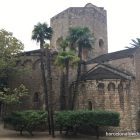

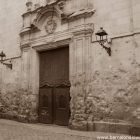
What about taking the Tibidabo Funicular? Does that get you close to the church?
Hi Dina,
Thank’s for your timely reminder that I need to update this post since there have been several changes related to transport options.
I’ll try and do so later this week.
In the meantime, yes, the Tibidabo Funicular or “Cuca de Llum” arrives close to the basilica.
If you will be visiting the amusement park, then the funicular is included in the price of the ticket which you can purchase online here.
Also, the Tibibus from Plaça de Catalunya no longer runs. As I said, I’ll update this later this week.
Are there any masses said here anymore?
Hi Amelia,
Yes, they still hold Mass. You can see the schedule on the church’s webiste (click here) under “Horario de Misas”.
We got the the v15 bus from Passeig de Gràcia for 2.40 e then the 196 bus up to the funicular. On the way back we got the free bus back down to avenue Kennedy and then the v15 bus again for 2.40e down to carrier de balmes where our hotel was. The day was amazing! The funicular only cost us 3.50e each as we are over 65 and the church lift was 5e, cash or card. The amusement park looked well worth it if you had children with you.
Hi Elizabeth,
Thanks for your feedback, I’m glad you enjoyed your day at Mt. Tibidabo and hope that you enjoy the rest of your stay in Barcelona.
Thanks for this post. Wanted to add some updates..
In “How to get there”
You can also take the L7 train to Av Tibidabo, and then take bus 196 to the base of the funicular (Cuca de Llum), which you can take all the way to the top for 12 euro return. This is possibly similar to the Tram route mentioned above. I did see the tracks for the tram, but the tram itself was still likely inoperative.
The lift up the tower was 5 Euros, though I didnt take it, so cant comment if card is accepted.
Hi Karthik,
Thanks for the feedback, I’ve now updated the price in the post. I update the blog frequently but, as the site grows, it’s hard to keep up so I really appreciate it when readers take the time to let me know about changes.
The Tramvia Blau mentioned above is still closed for restoration and unfortunately, at the moment there’s no news about when it will reopen. Until then, as you say, the Cuca de Llum, which has also been refurbished recently, would definitely be a good alternative.
Thanks again for your comment.